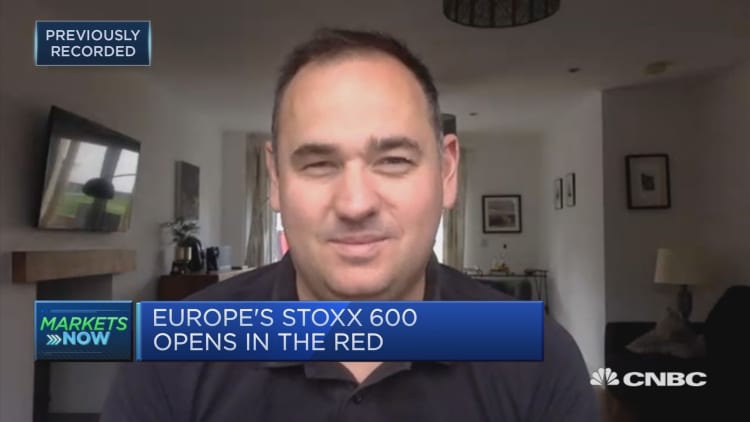Investors should prepare for a "downside correction" in equity markets in September or October, according to one market strategist.
With major stock markets around the world posting an unprecedented recovery in recent months, many commentators have questioned the sustainability of the rally given the external economic risks from the coronavirus pandemic and geopolitical tensions.
Speaking to CNBC's "Squawk Box Europe" on Wednesday, RW Advisory Strategist Ron William argued that the market is currently beholden to "asymmetric risk" on technical, seasonal and political fronts, identifying a break below 3,000 points on the S&P 500 as the "downside trigger." The U.S. benchmark currently sits at around 3,257 points.
"The Nasdaq is obviously the most overbought and certainly not representative of the U.S.A and not the world," William said, adding that the U.K. was "bottom of the list" in terms of RW's risk-ranking metric, while China's recent overbought condition has now unwound.
"I would suggest that everyone get ready for an August peak and a September or October correction, if not a protracted rolling W crash into year-end," he added.
The '1929 paradigm'
William highlighted that despite the rally, "smart money" in equities is at a nine-year low, with much of the rally fueled by Robinhood investors, which he termed a "telltale sign for downside risk."
Smart money refers to capital controlled by institutional investors, fund managers, central banks and various other financial professionals.
"Smart money is out, hot money, speculative money is in. That is a big paradigm that we need to be asking ourselves questions on," William said.
"Of course, the Fed has been pumping the market up by record amounts and other central banks have been following suit. Central bank policy can influence liquidity but not insolvency and so this is the 1929 paradigm, because similar things did happen back then," he said, adding that if "hot air" is driving markets, the downside risk is undoubtedly ahead.
'Grinding higher'
However, not all market participants are convinced that a drastic correction is imminent. Charlie Parker, managing director of Albemarle Street Partners, said the fund manager's house view was that markets can "grind marginally higher from here" if the economic recovery continues.
"It is going to be slower than it was in recent months, because of the uptick in virus cases in the U.S.," he said.
"I still don't think people have fully accounted for the impact that will have on the speed of this recovery but our view is that as long as the recovery can continue to some extent, we will see modest continuing gains for shares."

Parker also suggested, contrary to many commentators, that the rotation into "real economy" value stocks is unlikely, with the rally in quality and growth stocks continuing until an event that shifts the real economy, such as a coronavirus vaccine or treatment breakthrough. Much of the market rally has been led by high profile technology stocks.
"So we are grinding up but grind up with leadership still coming from those quality stocks," Parker concluded.

